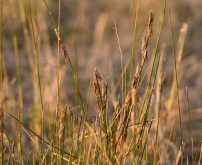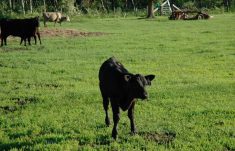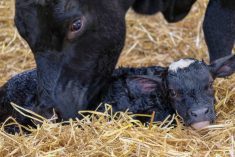Spring feels like the first chapter of a new book you hope becomes a favourite classic.
At the start of a new growing season, you have an idea of the basic summary of the story. The familiar rhythms of the arrival of baby calves and planting crops are certain. However, you can never be sure what the overall theme of the story will be. Mother Nature, the unpredictable main character, will keep the other people in your series wondering what might happen next.
Like most farmers across Canada, we make full use of the longer daylight to get some important jobs done that will set us up for the rest of the year. On our ranch, we will be almost all done calving our cow herd by the spring equinox, which means one of our top springtime tasks is processing calves and moving pairs out to pastures.
Read Also

Managing through market or individual stock declines
Even the best of public-traded companies can periodically experience significant drawdowns, and a successful investor should be prepared to react — or not react — accordingly, Herman VanGenderen writes.
We refer to spring processing as “branding” even though branding calves is just one part of a flurry of many necessary practices. We also apply and record RFID tags, vaccinate calves, tattoo and collect DNA hair samples on our purebred Gelbvieh calves, and perform or record other management practices as needed.
Good or bad, processing calves has evolved on our ranch. Years ago, we hosted a large, mounted branding in an outdoor pen where calves were roped, wrestled and processed by a capable crew of neighbours. Now that our in-house home-grown labour force has developed into a helpful team, we harness that youthful energy and have a smaller-scale event.
After sorting, our kids push calves up to a chute where we process them one at a time inside our barn. We brand commercial steer calves (banded at birth) in one group, commercial heifer calves in another, and our purebred calves in a separate group. We administer pre-breeding vaccines to our cows at the same time.
There are a lot of things I miss about having a big, efficient branding with a large crew of friends helping. Luckily, most of our neighbours still have a traditional-style branding at which we enjoy helping. One thing I don’t miss is branding in the blustery snow and freezing weather that inevitably hit on the early spring day for which we scheduled our workday. One reason we moved toward working calves indoors is they can stay dry and clean and hopefully have less stress during and post-processing.
‘Franching’
Seeding is another time-sensitive task that is a top priority. While our main focus is livestock production, we plant annual and winter annual cereal crops and polycrops that can be turned into feed, seed, grain, silage, straw or grazing, depending on our needs as the season progresses.
In our corner of southwestern Saskatchewan, we’ve experienced many successive years of drought, so if Mother Nature wanted to surprise us all with a precipitous plot twist for this year’s crop and pasture narrative, that would be welcome.
Being that crop farming isn’t our main enterprise and ranching is, we tend to get through the “franching” season with a lineup of equipment that may not be shiny or brand new, but it gets the job done. Running used equipment cuts down on costs but can add a little extra time for filling drills or repair work. On the plus side, I get a warm feeling of nostalgia every time I “grind ’em till I find ’em” in the three-tonne truck I’ve ridden in for literally my entire lifetime.
It’s hard to know how spring and the subsequent chapters of the year will play out on our farm or yours. Hopefully, the story of our growing season will unfold with lots of humour and little drama, perhaps a bit of mystery but no horror, and everyone will stay engaged in the plot but not become obsessed. We all deserve an easy read with a happy ending once in a while.















